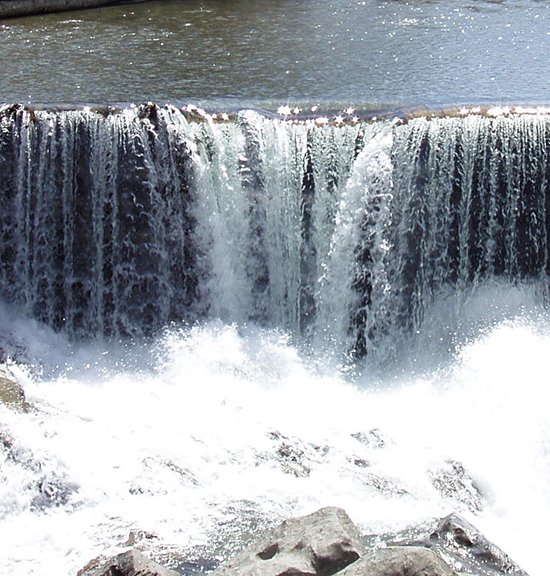Sampling results from the second round of Friends of the Mad River's 2015 Mad River Watch (MRW) volunteer water quality program show no sites with unfavorable swimming conditions Monday morning. It rained overnight Saturday and the earlier part of Sunday, washing sediments and pollutants from the land into the river and streams. By the time of sampling Monday morning, the system seems to have cleared.
The flow condition of the Mad River at the time of sampling Monday morning was high and declining (HD), measuring approximately 752 cubic feet per second (cfs) at the USGS flow gage in Moretown, down from about 2,020 cfs at 1:15 p.m. on Sunday, June 28. The median flow for this date is 93 cfs. None of the 36 sampling sites tested above the Department of Health/EPA safe E. coli level of 235 colonies per 100 mL of water.
Montpelier had the wettest June on record (previous record-breaker was 2013) with roughly 9 inches of rain! In the Mad River watershed, the USGS gage in Moretown rose to over 5 feet high on five occasions in June, including on June 1 when the gage nearly reached National Weather Service Flood Stage of 9 feet.
Remember that rains can cause E. coli levels to fluctuate, even on a daily basis, as water carrying pathogens moves down the watershed. Friends of the Mad River's E. coli sampling results are intended to give people a sense of the conditions that lead to high pathogen levels in the water so they can be informed.
"You are your best protector – use common sense and don't swim for at least a full day after a rain," said Corrie Miller, director of Friends of the Mad River.
E. coli is a type of coliform bacteria and is used as an indicator of pollution from human or animal waste and the potential presence of disease-causing organisms. It is estimated that at the level of 235 colonies E.coli per 100 mL water, approximately eight out of every 1,000 swimmers are likely to contract a waterborne illness related to fecal contamination.
This week's Mad River Watch volunteers included Paula and Charlie Baldwin, Susy Deane, Chase Fortier, Fran and Gary Plewak and Michael Ware. Susanne and George Schaefer drove water samples to the lab in Burlington for phosphorus and turbidity analysis. Sally Boudreau posted data at 10 swim holes across the watershed and Maryellen Kinhan completed the Wait House E. coli lab analysis. The Mad River Watch program would not be possible without these dedicated volunteers, Miller said.
For more information about E. coli and the Mad River Watch program and to view the most recent complete data report visit the Friends of the Mad River website at www.FriendsoftheMadRiver.org. Results are also available on Facebook (Friends of the Mad River) and on signposts at swim holes across The Valley.







